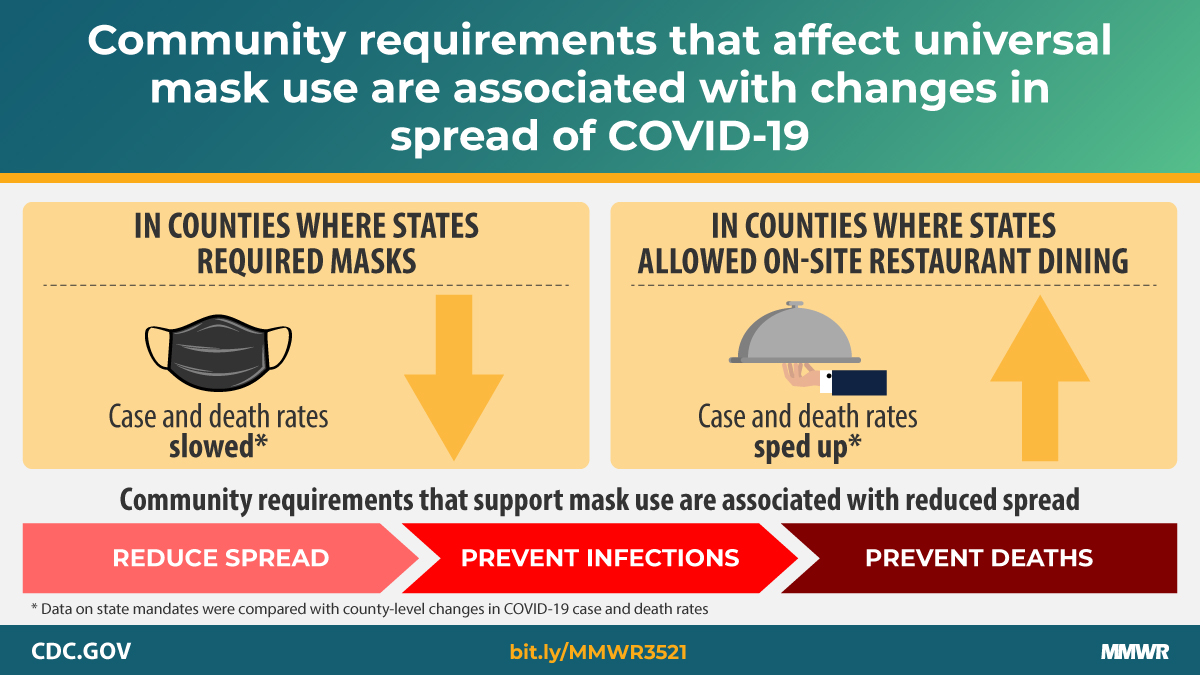During the Covid-19 pandemic, the ubiquitous face mask has become a lightning rod of controversy. Mandatory masking raised the ire of many despite the scientific evidence that wearing a mask, or even two masks, offer further protection against the virus.
Now some states are easing or doing away completely with mask mandates and other rules such as limiting capacity in restaurants or prohibiting on-site dining. Texas and Mississippi are tossing out the mandates and saying they are open for business as usual, even to the point of allowing businesses to operate at full capacity. Alabama has extended its mask mandate to April 9, but that’s the deadline, then it’s all masks off. Governor Kay Ivey said that she will still wear her mask after the deadline and urges people in the state to do the same. Governor Mike DeWine is taking a more measured stance, pairing lifting Ohio’s mask mandate with when the Covid-19 cases in the state get down to 50 cases per 100,000 people. On Tuesday, March 2, the case rate had fallen to 179 per 100,000 people, down from 731 cases per 100,000 in December.
But masking and limited capacity dining do work.
“Mask mandates and restricting any on-premises dining at restaurants can help limit community transmission of Covid-19 and reduce case and death growth rates,” Gery P. Guy Jr. PhD, MPH, and CDC colleagues report in the March 5 Morbidity and Mortality Weekly Report. They looked at county-level data on state mask mandates and restaurant closing and found that Covid-19 cases and deaths decreased daily within 20 days of implementing a mask mandate and that on-premises dining resulted in case and death rate increases 41-80 days after reopening. “These findings can inform public policies to reduce community spread of Covid-19.”
In their study, Guy and colleagues analyzed mask mandates and restaurant closures, looking at effective dates and expiration dates. “State-issued mask mandates were defined as requirements for persons to wear a mask 1) anywhere outside their home or 2) in retail businesses and in restaurants or food establishments,” they wrote. “State-issued restaurant closures were defined as prohibitions on restaurants operating or limiting service to takeout, curbside pickup, or delivery. Allowing restaurants to provide indoor or outdoor on-premises dining was defined as the state lifting a state-issued restaurant closure.”
They were looking at two outcomes — “the daily percentage point growth rate of county-level Covid-19 cases and county-level Covid-19 deaths.”
State-issued mask mandates during March 1–Dec. 31, 2020 were in effect in 2,313 (73.6%) of the 3,142 U.S. counties. “Mask mandates were associated with a 0.5 percentage point decrease (P=0.02) in daily Covid-19 case growth rates 1–20 days after implementation and decreases of 1.1, 1.5, 1.7, and 1.8 percentage points 21–40, 41–60, 61–80, and 81–100 days, respectively, after implementation (P<0.01 for all),” Guy and colleagues wrote. “Mask mandates were associated with a 0.7 percentage point decrease (P=0.03) in daily Covid-19 death growth rates 1–20 days after implementation and decreases of 1.0, 1.4, 1.6, and 1.9 percentage points 21–40, 41–60, 61–80, and 81–100 days, respectively, after implementation (P<0.01 for all). Daily case and death growth rates before implementation of mask mandates were not statistically different from the reference period.”
Restaurants that were allowed to reopen for on-premises dining in 3,076 U.S. counties (97.9%) did not show a statistically significant change in daily Covid-19 case and death growth rates 1-20 and 21-40 days out from the restriction being lifted. However, that changed the longer out from the restriction being lifted. “Allowing on-premises dining at restaurants was associated with 0.9 (P=0.02), 1.2 (P<0.01), and 1.1 (P=0.04) percentage point increases in the case growth rate 41–60, 61–80, and 81–100 days, respectively, after restrictions were lifted. Allowing on-premises dining at restaurants was associated with 2.2 and 3.0 percentage point increases in the death growth rate 61–80 and 81–100 days, respectively, after restrictions were lifted (P<0.01 for both). Daily death growth rates before restrictions were lifted were not statistically different from those during the reference period, whereas significant differences in daily case growth rates were observed 41–60 days before restrictions were lifted,” the study authors explained.
The evidence clearly shows the benefits of masking up and the risk of on-site dining. However, the study authors noted that prohibiting on-premises dining could have a negative impact “on the economy and the food services industry,” and they point to the CDC guidance offered for opening restaurants and bars.
Nonetheless, the message from the CDC is clear:
“With the emergence of more transmissible Covid-19 variants, community mitigation measures are increasingly important as part of a larger strategy to decrease exposure to and reduce transmission of SARS-CoV-2 (3,4). Community mitigation policies, such as state-issued mask mandates and prohibition of on-premises restaurant dining, have the potential to slow the spread of Covid-19, especially if implemented with other public health strategies,” Guy and colleagues noted.
- A report from MMWR shows that mask mandates are effective in mitigating the spread of Covid-19.
- Likewise, prohibiting on-site dining also mitigates Covid-19 spread and when the prohibition is lifted, Covid-19 cases and deaths tic up.
Candace Hoffmann, Managing Editor, BreakingMED™
Guy and fellow authors disclosed no relevant relationships.
Cat ID: 125
Topic ID: 79,125,730,933,125,190,926,192,927,151,928,925,934



